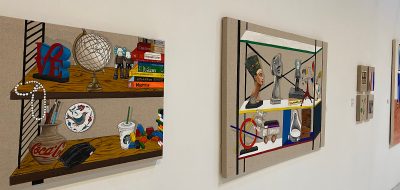‘Believing Is Seeing’ is a 1995 book by Mary Anne Staniszewski that, and I am going to state this outright, I did not like. One of the reasons is that it is hard to even define what this book is. Art history book? Not quite. Maybe art theory? Still does not qualify as one. A thesis that expresses a certain opinion? That is the closest to what the book is. In the following parts of this article I will try to explain why this book is not what a reader might expect it to be.
This is not an art history because the author did not even mention most of the important periods of art history. Why? Because instead she jumped straight into the (strongly constructivist) thesis that is defended throughout most of the chapters. According to Staniszewski, there was no such thing as art before modernity, and thus there could have been no periods of it. In defence of this argument, she states the motives of creation of pre-modern art and linguistic origins of the word itself. As if decoration of a church was issued by the king or the Pope, the artist (or a mere craftsman in this case) had no aesthetic desires in the process. As if painting The Last Supper was as monotonous and as manual as milking a cow. This is not an art theory book, because the author ignores all theories except her own. For example, she could have mentioned that, while according to her theory Sistine Chapel is not an artwork, it is considered one by cognitive theory because it conveys some idea. The author very briefly mentions the notions of beauty and aesthetics between the lines of some chapters, although these have been around Ancient Greece. However, she takes a whole chapter to indulge into linguistics, because it defends her thesis. The last chapter of the book describes modern art…kind of. There Staniszewski seems to claim that popular culture such as The Beatles or Cosby Show is the whole of modern art. It is indeed an inseparable part of modern culture, but popular culture surely should not be put on a pedestal like that. The tenth chapter then described a lot of irrelevant artworks; irrelevant because they all fail to show the essence of modern art. Instead of being a set of examples that show a tendency, those examples were more of a randomly collected catalogue.
The book is not completely bad, though. It still has interesting insights on how liberal democracy and individualism affected the change of motives of artists. It also showed the evolution of artistic institutions and honored the roles of minorities and women in art, which most of the books do not do. My personal favorite is chapter nine. In it, the author systematically mentions trends in the early twentieth-century art world, explicitly describes different international schools, and all the information in that chapter is relevant and well-structured.





